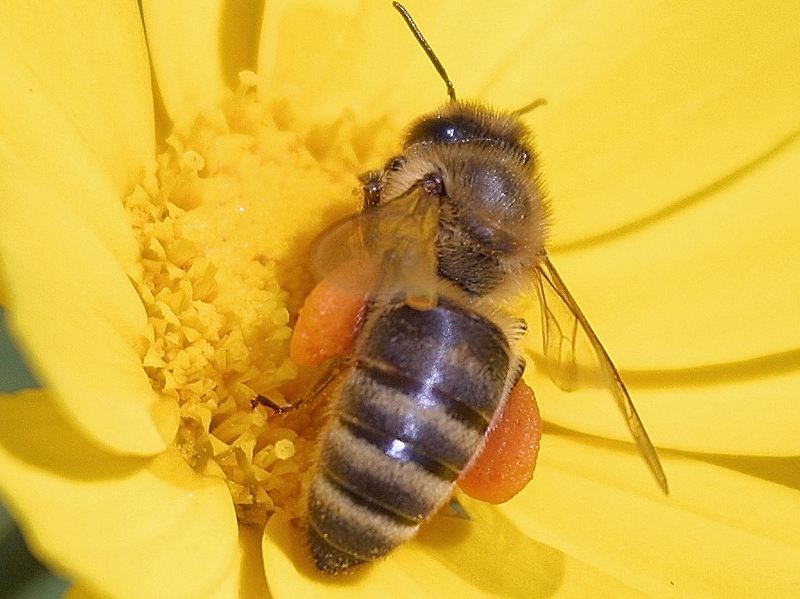 Recently, I went on a crash course in bee-keeping. Well, it was really more of an introduction. I've done well out of the day. The eldest daughter phoned in and bought me a 'smoker' while I was at my lessons (thank you). She also bought me a small little book called Brilliant Beekeeping. People get excited with you and for you when you start new adventures.
Recently, I went on a crash course in bee-keeping. Well, it was really more of an introduction. I've done well out of the day. The eldest daughter phoned in and bought me a 'smoker' while I was at my lessons (thank you). She also bought me a small little book called Brilliant Beekeeping. People get excited with you and for you when you start new adventures.I will probably not start keeping bees until next year. Robert, the owner of Bee Sustainable at 500 Lygon Street in Brunswick (see iframe below), gave a very good introductory session. I am more than enticed. But, I really must do two things first: (a) check with the council and (b) prepare to put up the hives.
There will probably be two hives. Robert says you can compare the hives this way and check to see if anything with one when it is not faring as well as the other. One of the threats is the small hive beetle (SHB) from South Africa. It is a real nasty pest whose life cycle includes a dousing of dust on the ground. I am no entomologist (I did study forestry management); but, I think, if you can break the cycle, you can control the pest.
So, that means positioning the hive facing the sunrise. On our suburban lot that puts the back of the hive facing the prevailing wind. I know this because a dear friend who is a pigeon fancier helped us to set up our chicken coop which faces the east for the same reason. More on that later. I would like to have a cement pad put down, or perhaps paving stones and grave atop a weed-mat as the footing for the hives. Hopefully, this will stop or slow the breeding of the beetle.
Is it worth the effort? Well, if one hive produces 50 kilos of honey a year it is. Two will give us more than enough honey to share with our neighbors. But, perhaps most importantly, we will be contributing to the viability of the honey bee in Victoria. If we loose this insect, we have lost an important pollinator and not just a source of honey. These insects are like the canary in the cage down in a coal mine. When they fall over, it is already too late to keep digging.
Attribution of image:
By Pachko (Own work) [CC-BY-SA-3.0], via Wikimedia Commons

No comments:
Post a Comment